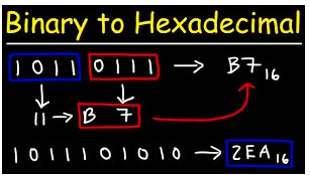BMC : Basics of Telecommunications(1)
[1]. Definition and models of Data Communication
1. Data communication?
- 역원 제도에서부터 발달함,
2. Basic concept and Terminology
1) Modern Communication Model
-
Human Communication
Agent -> Medium -> Agent (Info) (Signal) (Info) -
Telecommunication
Agent -> DTE/DCE -> Medium -> DCE/DTE -> Agent (S1->S2) (S2->S1) [DTE] : Data Terminal Equipment
[DCE] : Data Communication Equipment
2) Farther and Faster
- Analog Communication
- 예) (S1, M1) ► (S2, M2), Telephone
- Uses electricity to transmit messages
- Encoding: sending binaries using signals, e.g. Inside computers
- Analog Voice COmmunication
- Microphone captures voice vibrations, converts them to waves than can be expressed through variations of voltage
- Telephone (3000Hz), Hi-Fi Sound (15,000Hz; approximate range of human ear), Compact Disc (20,000Hz for each of two channels)
- Digital Communication
- Digitization: Information → binary representation
- Digital Convergence : Conver|ting all info into binaries Analog(Old info.) + Digitally Capturing -> DIgital information -> Transmission or Storage
3. Why Data(Digital) Communication?
The same technologies for transmission regardless the kinds of Information
- Speed: Compression
- Cost: Multiplexing (line sharing)
- Reliability(Quality): Error detection and correction
- Security: Encryption
4. Kind (Types) of source information
- Voice
- Image
- Video
- Data (Discrete Symbols)
5. Steps for Digital (Data) Communications
- Input (digitization): convert information into binaries (0 or 1’s)
- Encoding: generate signals(s) of which detectable events represent binaries
- Transmission: sending signals
- Decoding: recovering binaries from shapes of signals
- Output: presenting information to agent
[2]. Input (Digitization)
1. Binaries
- DC Calculus 1 : n bits produce 2n detectable events
- DC Calculus 2 : to represent x alternatives, n=log2x
- Converting Base Numbers : Deimal(10), Binary(2) and Hexadeciaml(16)
- Remainder Rule : Decimal to another base
- Summation Rule : Another base number to decimal
- Division Rule : Binary to Hexadecimal

2. Text DIgitization
- Binary Conversion from Discrete Symbols From Alphanumeric to binaries (Byte)
- ASCII-8bit, EBCDIC(IBM)
- Byte (B), Kilobyte (KB), Megabyte (MB), Gigabyte (GB), Terabyte (TB), Petabyte (PB), Exabyte (EB), Zettabyte (ZB), Yottabyte (YB)
3. Audio Digitization
1). From Graph(Audio waves)to Coordinates(t1,h1)(t,h2)….
2). Converting Samples to Bits
- Quantizing
- Similar concept to pixelization in graphic digitization
- Breaks wave into pieces, assigns a value in a particular range
- 8-bit range allows for 256 possible sample levels
- More bits means greater detail, fewer bits means less detail
3). Digital Encoding of Voice
- Primarily used in retransmission devices
- Uses pulse-code modulation (PCM)
- The sampling theorem: S=2F -If a signal is sampled at regular intervals of time and at a rate higher than twice the significant signal frequency, the samples contain all the information of the original signal.
- 8000 samples/sec sufficient for 4000hz
4). Sampling Theorem
- Voice Digitization: Sampling Digitizer (Audio Codec= Coder/Decoder)
- Quality of sampling depends on
- no. of samples (intervals) (S)
- no. of levels in heights (H)
- Sampling theorem: for a signal with the highest frequency F, then S (samples per second) = 2 F
- Data rate= Pulse-code modulation (PCM) for voice digitization: e.g., voice sampling (4000 Hz) with 256 levels?
- DS0 (Digital Signal 0: 8000 sample/second (baud) x 8 bits/sample = 64 Kbps, to carry a single digitized voice call.
- Multiplexing: DS1 = 24xDS0, DS3=28xDS1
- Copper Wires, T1 Line (AT&T) = 24 x DS-0 + 18 bits for framing = 1.544Mbps, T3= 45Mb
- Audio CD, ``RealAudio’’, Internet telephone applications such as Skype
5). Codec
6). Digital Voice Communication
4. Video Digitization
- Digitazation of Image(Graphics)
- Bitmap
- RGB Addictive Color model & Trichomacy
- Image Quality Issues
- Graphics
- Postscrpt
- Video Communication\
- Example of Video
[3]. Encoding
1. Data, SIgnals, and Transmission
- Digital Data Choices(Analog/Digital transmission)
- Periodic SIgnal Characteristics
- Analog Signaling
- The Electromagnetic Spectrum
2. Digital Signal
3. Analog Signal
4. Bandwidth
5. Encoding : Assigning BInaries to Signal
6. Modem
7. Method of Modulation
-
- ASK Illustration
-
- Amplitude Shift Keying(ASK)
-
- FSK Illustration
-
- Frequency Shift Keying(FSK)
-
- PSK Illustration
-
- DPSK : Differential Phase Shfit Keying
-
- Complex Modulations
-
- Digital Encoding Schemes
-
- NRZ
-
- Problme
- BIphase ALter
-
- Manchaster
- Analog Transmission of DIgital Data
- FSK :
- PSK :
- DPSK :
- QAM :
-
- QAM :Quadrature AMplitude Modulation Illustration
- CITT
- CITT V-Series Modem Recommendations
- QAM :Quadrature AMplitude Modulation Illustration
[4]. Transmission & Media
- The physical path between transmitter and reciever
- Design Factors(bandwidth / attenuation / interference / number of receivers)
1. Transmission Impairments
- Impairments and Capacity
- Transmission Impairments
- Attenuation
- Attenuation Distortion
- Delay Distortion
- Noises
- Type of Noices :Thermal(White noise), Intermodulation, Crosstalk, Impulse noise
2. Two major classes of transmission media
- Type of Noices :Thermal(White noise), Intermodulation, Crosstalk, Impulse noise
-
Conducted or guided media
- Twisted pair wires :
- Two varieties
- ST
- Advantages
- Disadvantages
- Two varieties
- Coax
- Advantages
- Disadvantages
- Fiber Optic Cable
- Fiber optic signals -
- Twisted pair wires :
- Wireless or unguided media
- Directional
- :
- Omnidirectional
- :
-
Spectrum (United States Frequency Allocations)
- Examples
- Terrestrial microwave transmission
- Advantages Disadvantages
- Satellite Microwave Transmission
- Satellite Transmission Process
- Terrestrial microwave transmission
- Directional
Leave a comment